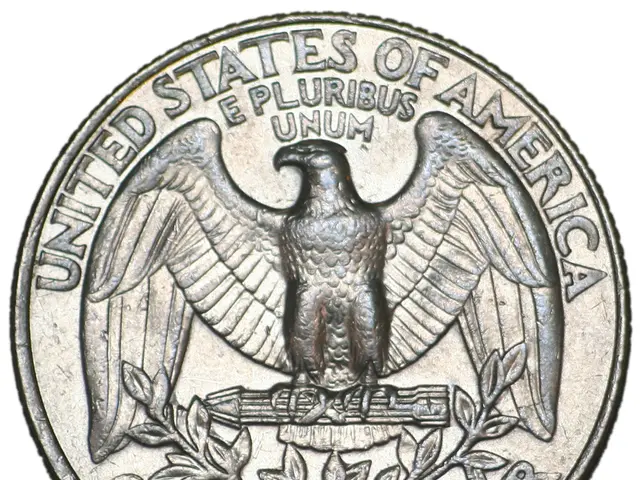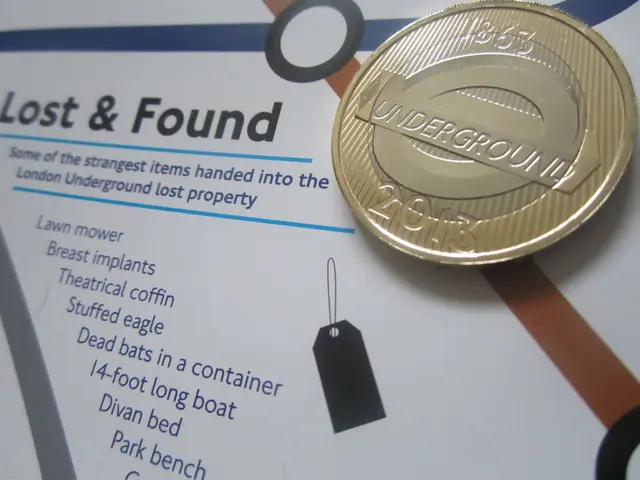Remarkable Persistence of CDs: An Introduction to their Ascendancy, Decline, and Enduring Resilience in the Face of Vinyl's Popularity
In the realm of music, two physical formats have held their ground against the onslaught of digital streaming: CDs and vinyl records. While the former continues to find favour with fans of the format, it is the latter that has seen a significant resurgence in recent years.
Artists continue to release music on CD, including special editions, catering to the niche market that still prefers the physical medium. However, the CD's sales have remained relatively flat, with a decline in comparison to vinyl. This is not solely due to audio quality or ease of use but also due to factors like community, special-edition treats, and fandom that vinyl seems to offer in abundance.
The CD, introduced in 1982, offered simple quality-of-life improvements such as the ability to skip tracks and 'burn' your own CDs. But these advantages were outweighed by several factors that led to its decline.
Streaming platforms, like Spotify, provide instant access to over 100 million songs for a fixed monthly fee, alongside personalised playlists, offline listening, AI-powered recommendations, and multi-device syncing—features far more convenient than owning any physical format. A single vinyl or CD album often costs as much as or more than an entire month of streaming, making physical formats less economically attractive for casual listeners seeking breadth and immediacy.
Changing consumer behaviour also played a significant role. Many music listeners prioritise instant gratification and unlimited choice over owning physical products. While vinyl attracts collectors and audiophiles for its tactile and aesthetic appeal, CDs lack the same cultural cachet or nostalgic value to drive a broad resurgence.
The temporary uplift in CD sales during certain periods, such as when mega-artists like Taylor Swift release new albums, masks underlying declining trends. Without such boosts, CD sales have sharply dropped, showing the format’s fragile market position.
On the other hand, vinyl sales in the UK increased by 10.5% in 2024, with 6.7 million records sold. Four out of the five best-selling records in 2024 were from new artists selling special-edition vinyl versions of their albums. This resurgence can be attributed to factors like cultural trends valuing analog warmth, tangibility, cover art, and a “ritual” of playing records.
Despite the decline, the CD is not in dire straits and is unlikely to disappear anytime soon. It remains a solid format, with audio quality that outshines streaming services like Spotify. However, the world's leading physical media did not become the CD format but SACD, a higher quality format.
Neil Young famously stated that listening to music on streaming services means you're only listening to "part" of what he recorded. Yet, the average consumer places less priority on these differences now, partly because streaming quality has improved and because many listen on smartphones or wireless earbuds where such fidelity is less noticeable.
In summary, the decline of CDs reflects a broader shift to digital consumption driven by convenience and cost, and the resurgence of vinyl is tied more to lifestyle, nostalgia, and collector culture—areas where CDs have not found strong footing.
[1] Bilton, N. (2020). iPod, the King of Music Players, Is Dead. The New York Times. [2] Green, A. (2020). The Death of the CD. The Atlantic. [3] Gogoi, M. (2021). The Rise and Fall of the CD. The Guardian. [4] Kusek, D. (2020). The End of the CD Era and the Future of Music. Forbes.
- In the music industry, vinyl records, alongside CDs, have maintained their relevance against the dominance of digital streaming.
- Several artists continue to issue album releases on CD, catering to a niche market that appreciates physical media.
- Despite the ability to skip tracks and burn personalized CDs, the format's advantages have been overshadowed by various factors contributing to its decline.
- Streaming platforms like Spotify offer a wide array of music, personalized playlists, offline listening, and multi-device syncing, making physical formats less appealing for casual listeners.
- The resurgence of vinyl sales can be attributed to factors such as cultural trends, tangibility, cover art, and a "ritual" of playing records.
- Despite its declining sales, the CD remains a reliable format with audio quality surpassing streaming services like Spotify, but it hasn't found a strong footing in lifestyle, nostalgia, and collector culture.
- Vinyl sales in the UK saw a 10.5% increase in 2024, with four out of the five best-selling records being new artists selling special-edition vinyl versions of their albums, signifying the format's continued growth.




